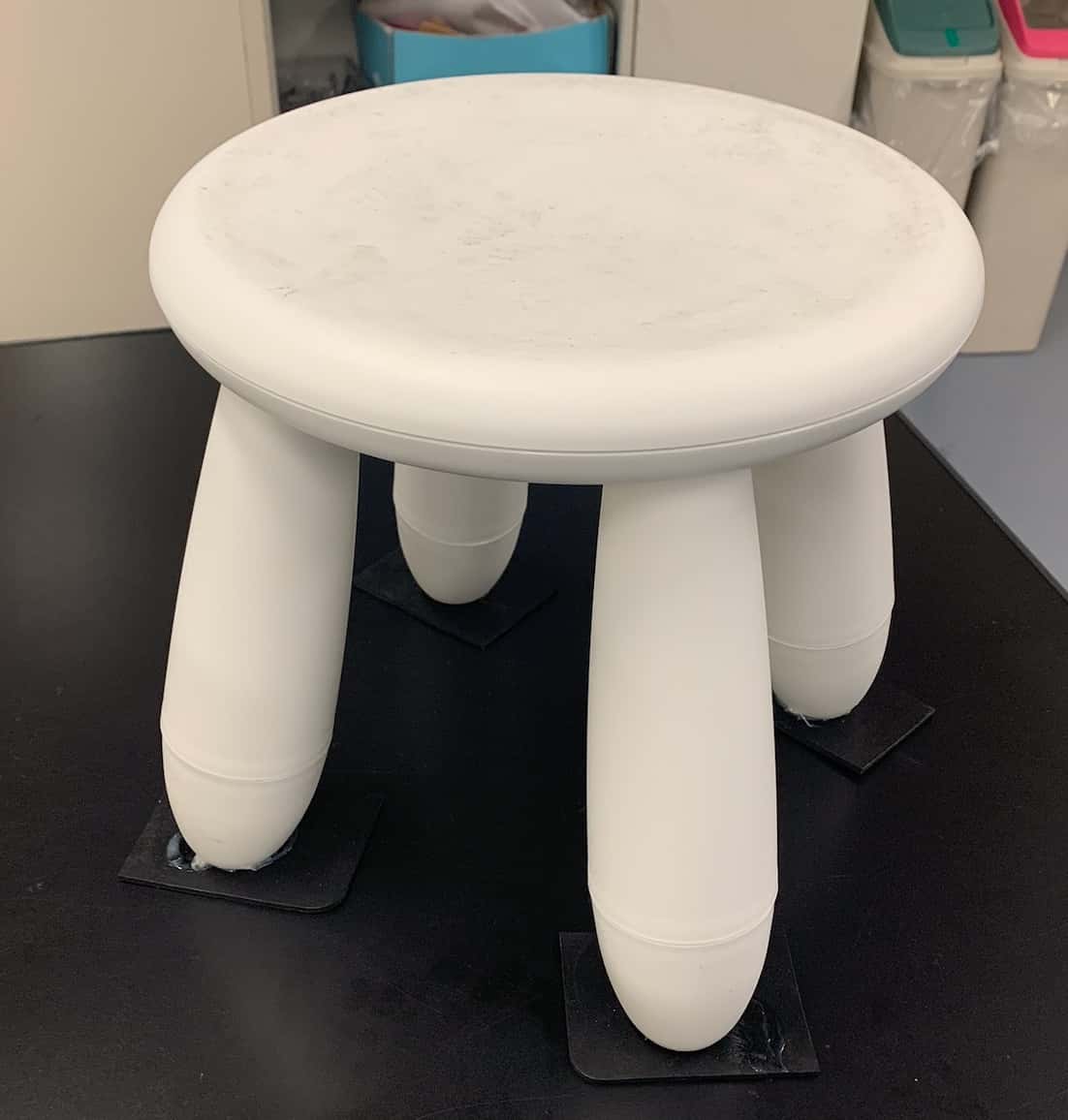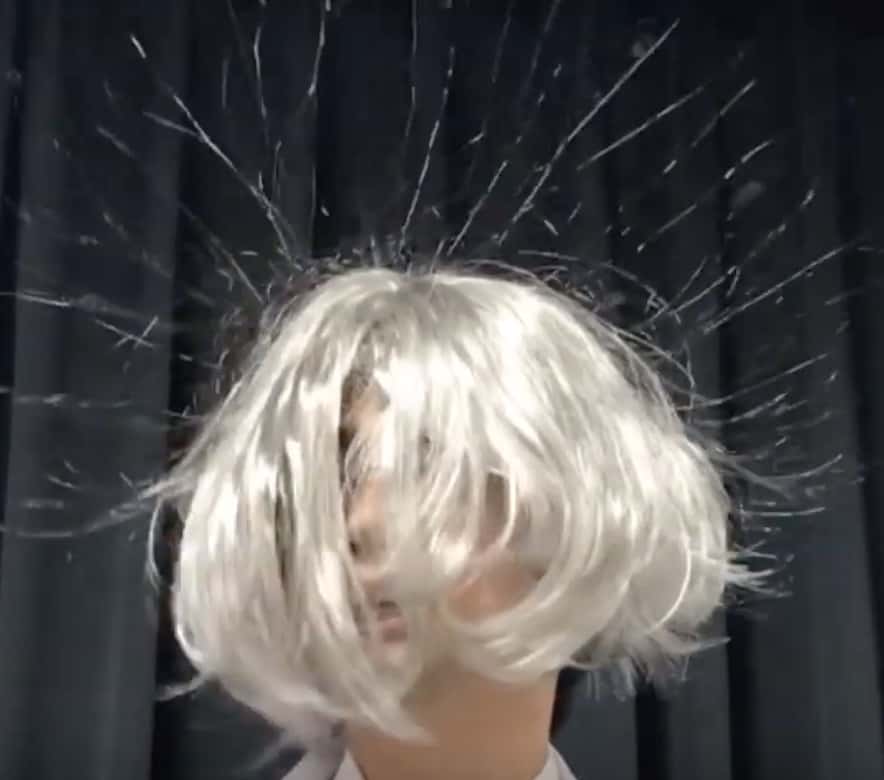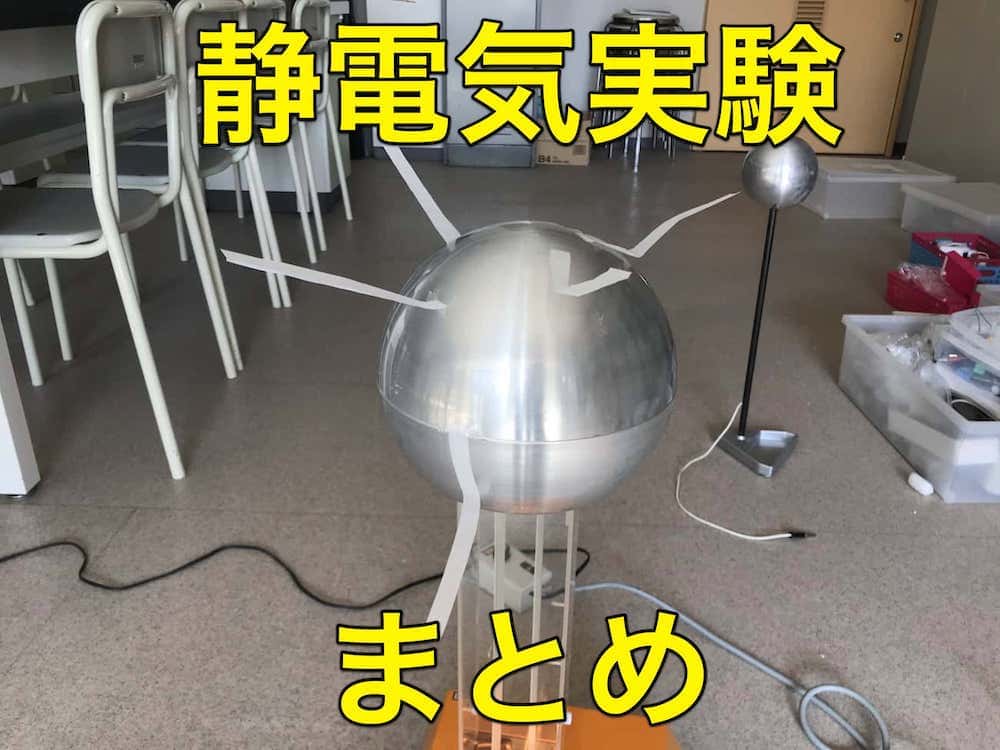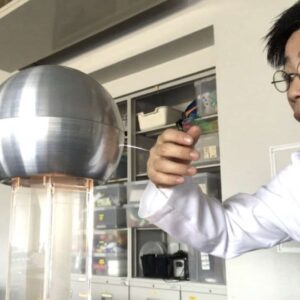Go Super Saiyan with Static Electricity! A Science Teacher’s 20-Year Quest for the Ultimate Hair-Raising Experiment
I’m Ken Kuwako, a science trainer. Every day is an experiment.
On a dry winter day, you touch a doorknob and get a “ZAP!” or hear “CRACKLE!” when you take off your sweater. Everyone has experienced this phenomenon: static electricity. Did you know that this seemingly pesky thing actually holds an incredible power, just like a hero from an anime?
This is the story of a boy who, captivated by the invisible force of electricity, chased his lifelong dream and finally became a master of static electricity.
A Fateful Encounter, From a Single Photograph
Ever since I was in elementary school, I’ve been fascinated by the mysteries of magnets and electricity. I remember getting so excited about that invisible force that could move things without even touching them. Then, one day in middle school, I stumbled upon a fateful photograph in a science textbook.
The photo showed a “Van de Graaff generator.”
A girl with her hand on a silver ball had her hair standing straight up towards the sky, as if it were freed from the pull of gravity. Her look was just like my favorite anime hero right before they unleashed a special move. In that moment, I swore to myself, “Someday, I want to take a picture just like this, a true ‘Super Saiyan’!”

My First Van de Graaff Experience: A Bitter “ZAP!”
In high school, I finally discovered the Van de Graaff generator I’d dreamed of, tucked away in a corner of the physics lab! I begged my teacher for a chance and finally got my first experience. With a pounding heart, I flipped the switch! But… no matter how many times I tried, my hair wouldn’t stand up. The only thing I felt was a faint “ZAP!” on my hand, confirming that electricity was indeed flowing.
The reason, looking back, was simple.
- My hair was too short to stand on end.
- My body wasn’t properly “insulated.”
All the static electricity I was trying to build up was escaping through my feet to the ground. Electricity, much like water, always seeks the path of least resistance. My body wasn’t a bucket for storing electricity; it was just a sieve.
Even with that failure and the certain feeling of electricity in my palm, it became the spark that ignited my curiosity and solidified my belief that, “If I just do it right, I can definitely get a picture like that!”
Dream Come True! Hair, Reach for the Sky!
Now a science teacher, I went back to the dream I couldn’t give up on as a child, and I started a new series of experiments. How can I efficiently store electricity in my body? What’s the best material for insulation? After much trial and error, I finally succeeded in getting my ideal hair-raising photo!
Today, I’m going to share my “science recipe,” the culmination of years of research.
Science Recipe: How to make your hair stand on end with static electricity
What you’ll need: Van de Graaff generator, a wig, and an insulating platform
Step 1: Choose a Wig [Maximize the Repulsive Force!]
Your own hair will work, of course, but for a truly dynamic hair-raising experience, a wig is your best bet. After trying many different styles, I found that a “bob” was the perfect solution.
[The Science Behind It]
Why is a bob ideal? Because each strand of hair is light. When you build up static electricity in your body with the generator, every hair strand becomes charged with the same type of electricity (for example, negative). Just like the same poles of a magnet repel each other, the negatively charged hair strands “don’t want to be near” each other and push each other away. This repulsive force is what makes the hair stand up against gravity. If the hair is long and heavy, it requires a much greater force to lift it. A light, short bob style is the perfect match for the power of static electricity.
Step 2: Create the Ultimate Insulating Platform [Trap the Electricity in Your Body!]
To keep the static electricity in your body from escaping to the ground, an “insulating platform” is the most crucial item for this experiment’s success. I made my own by cutting and attaching a non-conductive rubber sheet to the bottom of the legs of a plastic chair (which I bought at IKEA).

[The Science Behind It]
Materials that easily conduct electricity are called “conductors,” while those that resist it are called “insulators.” The human body and the ground are good conductors of electricity. Therefore, if you touch a Van de Graaff generator directly, the electricity will flow through your body and escape to the ground. By physically separating your body from the ground with an insulator like plastic or rubber, your body can finally act like a “battery” and store electricity.
Step 3: Time to Practice! [Become One with Static Electricity]
Once you’re ready, put on the wig, stand on the insulating platform, and slowly touch the metal sphere of the generator. Feel the electricity spread throughout your entire body. And then… !

This was the moment my lifelong dream came true! The feeling of floating and the sensation of my hair standing on end is exciting every time. I encourage all of you to try this wonderful and incredibly fun experiment. You’ll be hooked, guaranteed.
By the way, you can do the same experiment using a mannequin.
Static Electricity Just Got More Fun!
With this Van de Graaff generator, you can do many other exciting experiments besides making your hair stand up. In fact, I’ve performed some of these experiments on TV shows with many famous celebrities like Suzu Hirose, Ryohei Suzuki, Yasuko, and Chocolate Planet. You can find out more about those surprising experiments here.

※ Caution: Experiments using a Van de Graaff generator generate very high voltage. Please ensure you take every safety precaution and perform them under the guidance of a professional.
For inquiries about static electricity experiments (experiment classes, TV supervision, appearances, etc.), please contact me here.
【Special Feature】You Won’t Be Able to Stop! The World of Static Electricity Experiments
Inquiries and Requests
The wonders and fun of science, made more accessible! This site provides easy-to-understand summaries of fun science experiments you can do at home and tips for doing them. Feel free to search around!
・About the operator, Ken Kuwako: here
・For various requests (writing, lectures, experiment classes, TV supervision, appearances, etc.): here
・Article updates are posted on X!
![]() The Science Channel is posting experiment videos!
The Science Channel is posting experiment videos!



